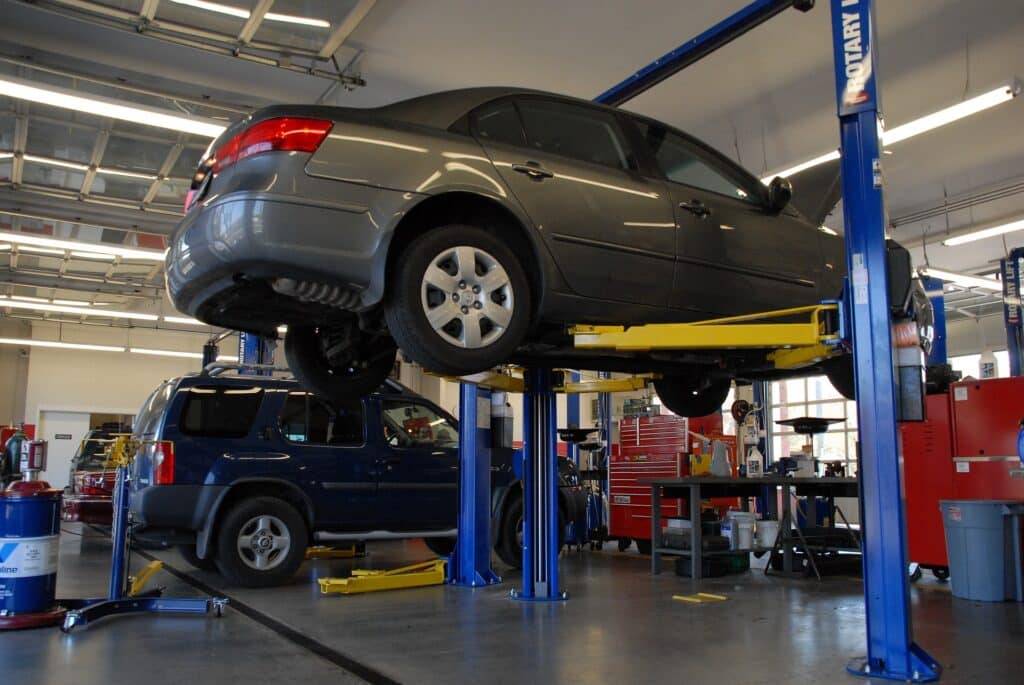It’s the beginning of 2022 and people are starting their New Year’s Resolutions from getting into shape to refraining from sweets or adult beverages. We all have ways in which we want to improve our lives in the upcoming year. As we look to better our lives and those around us, there is one thing that we often take for granted and may not be thinking about, our vehicle. Our cars are a big part of our lives and need a good new years resolution as well. Here, Marietta Wrecker Service discusses some important annual car maintenance tasks to think about for 2022.

Change Your Oil Routinely
Part of maintaining a reliable vehicle is making sure it is properly oiled. Get routine oil changes every 3,000-5,000 miles and check oil levels frequently every month. Changing the oil regularly is vital to keeping your car running smoothly. If you have a newer vehicle, most will give you a signal to remind you that the oil needs changing. If you own an older vehicle, set a reminder on your phone so you never forget this important car maintenance task. With that being said, checking your oil level is much easier and only takes a few minutes. Follow these simple steps:
- After the engine has turned off, wait at least 5 minutes.
- Make sure you are on a level surface.
- Look for your car’s oil dipstick undernearth the hood of the car. It usually says oil or displays an oil can icon.
- Pull out the dipstick and wipe it clean with a rag or paper towel.
- Put the dipstick all the way back in.
- Pull the dipstick back out and inspect it without turning it upside down. You should have two markers near the bottom of the dipstick. If the oily part ends below the bottom marker, you need more oil. Never add more than a quart of oil at a time before rechecking the oil level. Too much motor oil is bad for the vehicle. If the oil level is between the two markers, you are good to go.
Learn How to Change a Tire
Every car owner should learn how to change his or her own vehicle’s tire. Sure, roadside service is reliable, but what if you don’t have AAA or cell service? There might come a time when you need to know this important skill. Ask family members to join you for the lesson, especially if you have a new driver in the family. Follow these simple steps:
- Make sure your car is in a safe area.
- Remove the hubcap and get the spare tire out.
- Loosen the lug nuts with a lug wrench (just a little bit).
- Reference your owner’s manual for the correct location to place the jack.
- Raise the jack and make sure it has securely contacted the car’s frame.
- Crank up the jack until the wheel is high enough to remove the tire.
- Use the lug wrench to remove the lug nuts. Don’t lose the lug nuts!
- Remove the flat tire and place it flat on the ground.
- Line up the spare tire with the studs and put the lug nuts back into place with your hand. When you can’t turn the nuts or bolts any further, lower the jack until the wheel is on the ground.
- Finish tightening the lug nuts with your wrench.
- Remember, a spare tire is only a temporary fix and should never be driven at high speeds over 50 mph. Get your tire repaired or replaced as soon as possible!

Take Care of Your Tires
Having a flat tire is obvious. But most people don’t notice when the tire is low, worn, or ready to be replaced. When your tire is not properly inflated, your gas mileage goes down and your risk for a flat increases. When a tire is overinflated, you run the risk of a blow-out. It’s time to use your tire gauge and find out how much air you need to put back in. Refer to your owner’s manual for the proper tire pressure. This is usually between 30 and 35 PSI. Gas stations sometimes have automatic XactAir tire pumps that will get your pressure to the exact PSI. Find one that’s local and utilize it if necessary.
In addition to making sure your tires are safe and inflated properly, you want to remember to rotate your tires every 5,000-10,000 miles or so (check your owner’s manual for a more accurate rotation schedule). Since your tires wear unevenly, rotating your tires can help ensure a longer lifespan for each tire. Regular tire rotations also provide a smoother and safer ride. While it is possible to rotate your tires yourself, it may be easier to ask a mechanic to do it for you.
Drive Without Distractions
Georgia is a hands-free state. Do NOT text while driving. If you must use your phone on the road, use a hands-free device and don’t take any calls during hazardous driving conditions. Don’t write down notes or look up things on your phone while driving. If you must place a call, do so at a red light, stop sign, or parking space. Deaths from car accidents are often the most preventable. It’s important for all parties on the road to stay vigilant and focused. Make it a New Years’ resolution to drive safer in 2022.
Learn How to Jump-Start a Car
Even though jumpstarting a dead battery is very easy to do, too many people rely on AAA or a good samaritan to come to the rescue. Everybody should know how to jumpstart a dead battery. Not only can you save time, but you can also come to the rescue for someone else. To prevent being stranded on the side of the road or looking foolish when someone asks for your help, a good car resolution is to learn how to jumpstart a car. Be extra careful and make sure the jumper cables are connected to the right areas! Don’t risk electrocution. Red = positive. Black = negative.
Check Fluids & Follow Maintenance Schedule
Professional maintenance is necessary to keep your car running properly all year. This includes fluid checks and changes, tire rotations, and general inspections. Check your owner’s manual for a recommended maintenance schedule. If you lost yours, look up your make and model online for a reliable schedule. By regularly checking your car’s fluid levels and replacing them as necessary, you can avoid most car repairs.
- Motor Oil: check monthly.
- Transmission Fluid: check monthly.
- Coolant (Antifreeze): check twice a year.
- Brake Fluid: check every time you change your oil.
- Power Steering Fluid: check monthly.
- Windshield Wiper Fluid: check monthly.
Keep Your Car Clean
For some of you keeping your car clean comes naturally, but for the rest of us, it is a daily challenge. If your car is a mess going into the new year learn how to declutter your car and prevent future messes. To start, remove everything from your car that you do not need. Second, organize those important papers in your glove compartment and throw away the papers you don’t need. Throw out old receipts, coupons, and other miscellaneous papers. Then find the important documents like the registration, insurance, and owner’s manual and put them in a zip lock bag. Lastly, give your car a deep clean after you’ve decluttered it. Vacuum the seats and floors, wipe down windows, and take them through a car wash. This not only improves the value of your car but helps you feel better about yourself.

Need A Tow?
Are you looking for a reliable towing company for your car or motorcycle? Broken down vehicle, flat tire, car lockout, or dead battery? Our 24/7 light-duty towing services are just a phone call away!
Marietta Wrecker Service is available to provide you with roadside assistance in any situation or vehicle emergency. We offer a wide array of services to all of our motorist customers, including car towing and emergency roadside service. Marietta Wrecker Service provides emergency towing to the metro Atlanta area, and our “on-call” fleet of tow trucks and service vehicles guarantees a prompt response. When roadside conditions or physical impairment prevent you from changing your own tire or doing what is needed to fix your vehicle, our emergency roadside assistance gets you back on the road quickly.
Marietta Wrecker Service provides light-duty towing services for automobiles that are disabled. This may involve recovering an automobile damaged in an accident, returning one to a drivable surface in a mishap or inclement weather, or towing or transporting one via flatbed to a repair shop or other location.
